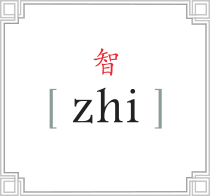Lapsang Souchong


Ingredients: 100% Organic black loose tea leaves
Richly evocative and aromatic, this Fujian, China, black tea is at once smoky, fruity, and rich.
This tea ROCKS!
Pine smoked leaves in the centuries-old tradition yield a distinctive cup that reveals more fruit notes upon subsequent steeping.
This may be the smoothest, most evocative black tea you have ever tasted. Foodies try this tea in recipes. You will be amazed.
Hint: A shorter steep yields a superb straight tea needing no milk or sugar.
Water: 208°F | Leaves: 2 tsp per 12 ounce cup | Infusion Time: 3-4 minutes
Basic Steeping Tips
- Use filtered or spring water, whenever possible
- Don’t overboil water
- Remove leaves after recommended time (adjust to taste)
- If you want stronger tea, use more leaves instead of steeping for a longer time.
Leaves can be resteeped 2-3 times resulting in various flavor differences. Don’t throw out those leaves until they have given it all up!
Black tea has a class of polyphenols that protect your bones and teeth (help the body from pulling calcium) and is good for your heart. Black tea contains antioxidants and about 1/3 the amount of caffeine as found in a cup of coffee.
Lapsang souchong is a black tea which originates from the Wuyi Mountains of the Fujian Province. In Fukienese, Lapsong souchong means “smoky sub-variety”. It is sometimes described as “yan cha” or “smoked tea” because of the smoky flavor of the tea. This flavor is very distinct from other teas due to the traditional method of smoke-drying the leaves over pinewood fires.
The legend behind Lapsang souchong says that the tea was actually discovered by accident. During the Dao Guang era of the Qing Dynasty in China, an army unit passed through the village Xingcu and camped out at a tea factory, which was filled with unprocessed fresh tea leaves. Only after the soldiers left could the factory workers come back in and work. They realized that there was not enough time for the leaves to dry the usual way in order to get to the market on time. So the tea producers decided to speed up the drying process by having the workers dry the tea leaves over fires made by local pines. Not only did the tea reach the market on time, but a new product was born.
To make Lapsang souchong, the leaves are first withered over fires of pine or cypress wood. After panfiring and rolling, they are pressed into wooden barrels and covered with cloth to ferment until they give off a fragrance. Afterwards, the leaves are fired again and rolled into strips. Finally, they are placed in bamboo baskets and hung over smoking pine fires to dry and absorb the smoke flavor.

